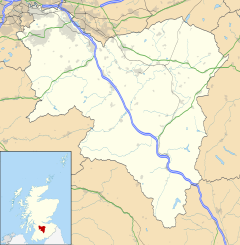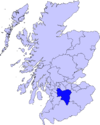Lesmahagow is a small town in the historic county of Lanarkshire on the edge of moorland, near Lanark in the central belt of Scotland. Lesmahagow was also a civil parish. It lies west of the M74, and southeast of Kirkmuirhill. It is also known as Abbey Green or the Gow.
Blackwood is a village which borders Kirkmuirhill, near Lanark in the central belt of Scotland. It has a few small shops, a Roman Catholic church and a couple of primary schools.

Tranent is a town in East Lothian, in the south-east of Scotland. The town lies 6 miles from the boundary of Edinburgh, and 9.1 miles from the city centre. It lies beside the A1 road, the A1 runs through the parish splitting the parish from its associated villages and hamlets namely Meadowmill and the port of the parish Cockenzie. The original main post road ran straight through the town until the new A1 was built. Built on a gentle slope, about 90 metres (300 ft) above sea level it is one of the oldest towns in East Lothian. The population of the town is approximately 12,140, an increase of over 4,000 since 2001. Tranent was formerly a major mining town, but now serves as a commuter town for Edinburgh.

One of the Waverley Novels by Walter Scott, The Black Dwarf was part of his Tales of My Landlord, 1st series (1816). It is set in 1708, in the Scottish Borders, against the background of the first uprising to be attempted by the Jacobites after the Act of Union.
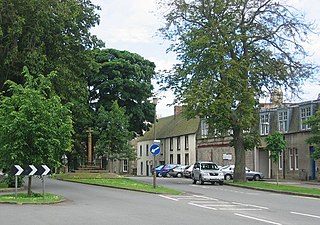
Ormiston is a village in East Lothian, Scotland, near Tranent, Humbie, Pencaitland and Cranston, located on the north bank of the River Tyne at an elevation of about 276 feet (84 m).

Mauchline is a town and civil parish in East Ayrshire, Scotland. In the 2001 census Mauchline had a recorded population of 4,105. It is home to the National Burns Memorial.
Muckhart commonly refers to two small villages in Clackmannanshire, Scotland, Pool of Muckhart and Yetts o' Muckhart. Muckhart is one of the Hillfoots Villages, situated on the A91 around 3 miles northeast of Dollar. The Gaelic name, Muc-àird, comes from muc ("pig") + àird ("height"), and may derive from the fact that the surrounding fields may once have been used for pig farming.

Agnes Broun, Agnes Brown or Agnes Burnes, was the mother of Scotland's national poet, Robert Burns. Agnes's father, Gilbert (1708–1774), was the tenant of the 300-acre (120 ha) farm of Craigenton, in Kirkoswald parish, South Ayrshire, Scotland.

Alison Begbie, Ellison Begbie or Elizabeth Gebbie (1762–1823), is said to have been the daughter of a farmer, born in the parish of Galston, and at the time of her courtship by Robert Burns she is thought to have been a servant or housekeeper employed at Carnell House, then known as Cairnhill, on the River Cessnock, situated about 2 miles from Loudoun Mill. It is thought that Burns's youngest sister Isobel Burns confused her name, which was really Elizabeth Gebbie.

Elizabeth "Betsey" Paton or later Elizabeth Andrew of Lairgieside was the daughter of James Paton and Eleanor Helen Paton of Aird Farm, Crossroads, Ayrshire. Following an affair with Robert Burns she gave birth on 22 May 1785 to his first child, Elizabeth "Bess" Burns, the "Dear-bought Bess", who was baptised when only two days old. Betsey met Robert Burns when she was employed as a servant girl at the Burns's Lochlea Farm during the winter of 1783–84. When the Burns family moved to Mossgiel Farm in March 1784, Betsey returned to her own home, where Robert Burns visited her later that year. In 1786, Elizabeth made a claim on Burns, but accepted a settlement of twenty pounds which the poet paid out of the profits of the Kilmarnock Edition. Loving Burns with heartfelt devotion, she continued to see him after the Burns family had moved to Mossgiel Farm, and he returned these sentiments with more physical than spiritual devotions. Isabella Begg, Burns's youngest sister, stated that although Robert did not love her, "he never treated her unkindly."
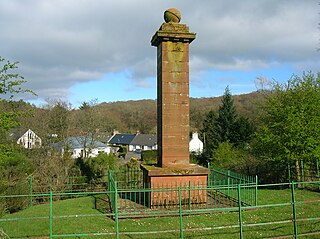
Mary Campbell, also known as Highland Mary, was the daughter of Archibald Campbell of Daling, a sailor in a revenue cutter, whose wife was Agnes Campbell of Achnamore or Auchamore. Mary was the eldest of a family of four. Robert Burns had an affair with her after he felt that he had been "deserted" by Jean Armour following her move to Paisley in March 1786. The brief affair started in April 1786, and the parting took place on 14 May of that year. Mary's pronunciation of English was heavily accented with the lilt of local indigenous language, Gaelic - and this led to her becoming known as 'Highland Mary.'
Jean Gardner or later Jean Hill, was "a young woman of very surpassing beauty," with a "light foot and an ensnaring eye," but she may have been thirteen years older than Robert Burns with whom she was on friendly or 'intimate' terms. A strong local tradition in Irvine links her with Robert Burns, however no contemporary written evidence records this relationship and Burns himself is not thought to have written about her, other than a disputed use of her given name as the 'darling Jean' of Burns's 'Epistle to Davie', and most recent writers have considered the reference to be to Jean Armour.

Gilbert Burns (1760–1827), the younger brother of Robert Burns the poet, was born at Alloway. He married Jean Breckenridge in 1791, had six sons and five daughters, died in 1827, aged 66, and was buried at Bolton, East Lothian, Scotland. Gilbert's writings have contributed greatly to the bank of knowledge that exists regarding the life of his famous brother.
James Joseph Hope-Vere of Craigiehall MP FRSE (1785–1843) was a 19th-century Scottish landowner and politician. As a politician he was deemed a moderate Whig.
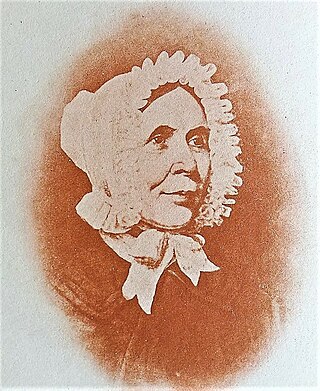
Isabella Burns (Isabella Begg) (1771–1858) or Isobel Burns (Isobel Begg) was the youngest sister of the poet Robert Burns, born to William Burness and Agnes Broun at Mount Oliphant Farm on the 27 June 1771 and christened on 2 July 1771 by Rev. William McGill, a friend of her father. When she died she was the last member of Robert Burns's immediate family and when living at Bridge House in Alloway for the last sixteen years of her life she entertained many visitors who were interested in his life and works. She was the source of many published insights into Burns's life, character and loves. Her siblings knew her as 'Isbal'.

Robert Burns's Commonplace Book 1783–1785 is the first of three commonplace books that were produced by the poet. The contents cover drafts of songs and poems, observations, ideas, epitaphs, etc.

Robert Aiken was one of Robert Burns's closest friends and greatest admirers. He was born in 1739 in Ayr, Scotland. His father John Aiken, was a sea captain who owned his own ships and his mother was Sarah Dalrymple, distantly related to the Dalrymples of Stair. He became a writer or lawyer in Ayr and was referred to by Burns as "Orator Bob" in his poem "The Kirk's Alarm". Robert was famous for the power, beauty and quality of his oratory as his nickname infers.

Hugh Mackail, Scottish martyr, was born about 1640 at Liberton, near Edinburgh. His father was Matthew Mackail who was minister at Bothwell before being deprived of his ministry by the government in 1662. At an early age he went to reside with an uncle, Hugh Mackail, one of the ministers of Edinburgh. He entered the University of Edinburgh, studying divinity, where he distinguished himself, graduating, as the records show, in 1658 under Thomas Crawford. Shortly afterward he became chaplain and tutor in the family of Sir James Stuart of Coltness and Goodtrees, then Lord Provost of Edinburgh. In 1661, being then in his twenty-first year, he was licensed by the Presbytery of Edinburgh and afterward preached several times with much success. A sermon which he delivered in the High Church, Edinburgh, in September 1662, in which he declared that "the church of Scotland had been persecuted by an Ahab on the throne, a Haman in the state, and a Judas in the church," gave such offence that a party of horse was sent to apprehend him. He escaped, however, and, after lying concealed in his father's house in Bothwell for some time, retired into Holland, where he improved his time by studying for several years perhaps near Rotterdam. Then, returning to Scotland, he lived chiefly at his father's house, until in November 1666 he joined a rising of the covenanters. After nine days' marching, however, his weak health obliged him to leave the insurgents, and on his way back to Liberton he was arrested, carried to Edinburgh, and committed to the Tolbooth. He was several times brought before the council and tortured with the boot. Finally, after trial, despite the efforts of his cousin, Matthew Mackail, an apothecary, who interceded with James Sharp, archbishop of St. Andrews, on his behalf, Hugh was hanged at the market-cross of Edinburgh on 22 December 1666, amid "such a lamentation," says Kirkton, "as was never known in Scotland before, not one dry cheek upon all the street, or in all the numberless windows in the market-place." According to MS. Jac. V. 7. 22, in the Advocates' Library, "immediately after the execution of the aforementioned four men there came a letter from the king, discharging the executing of more; but the Bishop of St. Andrews kept it up till Mr. Hew was executed," Mackail behaved with great fortitude on the scaffold, addressing the crowd with singular impressiveness. He was buried in Greyfriars churchyard. Wodrow describes him as "universally beloved, singularly pious, and of very considerable learning."
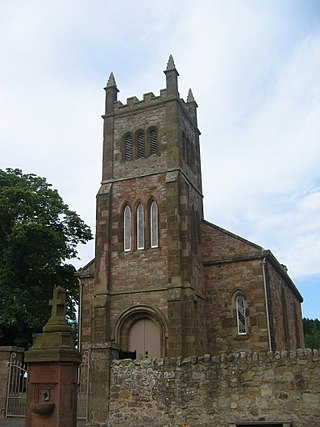
Annabella Burns or Nannie Burns (1764–1832) was the second oldest sister of the poet Robert Burns, and the last child born to William Burness and Agnes Broun whilst at the Alloway cottage. She was born on the 14 November 1764 and she was christened on 17 November by Rev. William Dalrymple, the minister of Ayr Parish Church. When she died in 1832 she was the last member of Gilbert Burns's household at Grant's Brae to be buried at the Bolton Kirk family lair. Gilbert Burns had died, also aged 67, five years earlier in 1832.

William Burns (1767–1790) was the second youngest brother of the poet Robert Burns and the third son born to William Burness and Agnes Broun. William was born at Mount Oliphant Farm on the Doonholm Estate near Alloway, about three miles from Ayr, on the 12 July 1769. He was christened circa 6 August 1767 by the Rev. Rev William Dalrymple of Ayr parish and kirk.
